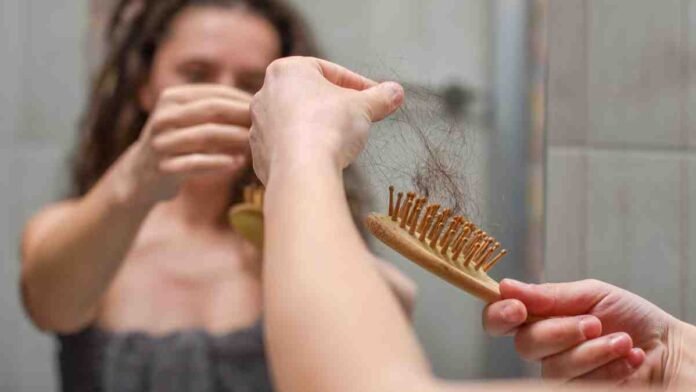Hair fall is one of the most common concerns people face, but how much hair loss is normal? Should you worry if you find hair strands on your pillow or in your comb? To separate fact from fear, we turned to expert dermatologists for answers.
What’s Considered Normal Hair Fall?
Dermatologists claim that it is typical to lose 50 to 100 hairs every day. The anagen (growing), telogen (resting), and exogen (shedding) phases of your hair’s natural growth cycle are included in this. Daily shedding can be caused by stress, seasonal changes, or even tight hair ties, but this does not necessarily indicate that you are experiencing baldness.
When Should You Start Worrying?
It’s time to pay attention if:
- You’re losing more than 150 strands a day regularly.
- Hair fall is accompanied by itching, redness, or flakes on the scalp.
- You notice visible thinning or bald patches.
- There’s excessive hair fall after illness, childbirth, or significant stress.
These signs may indicate conditions such as telogen effluvium, alopecia areata, or even nutritional deficiencies. It’s best to consult a dermatologist to identify the root cause.
What Causes Abnormal Hair Fall?
Several factors can trigger unusual hair loss:
- Stress and anxiety
- Poor diet or iron/vitamin D deficiency
- Hormonal changes (PCOS, thyroid issues, menopause)
- Certain medications
- Over-styling or frequent heat treatments
Identifying the cause early can help you take corrective steps.
Tips to Manage Hair Fall
- Maintain a balanced diet rich in proteins, biotin, and iron.
- Use mild shampoos and avoid harsh treatments.
- Keep your scalp clean and free from buildup.
- Reduce stress with meditation or regular exercise.
- Avoid tight hairstyles that pull on your roots.
When you notice hair in your comb, don’t freak out. The natural cycle of your body includes some shedding. However, it’s time to consult a doctor if hair loss worsens or is accompanied by further symptoms. Healthy hair can be restored, and additional damage can be avoided with early intervention.



